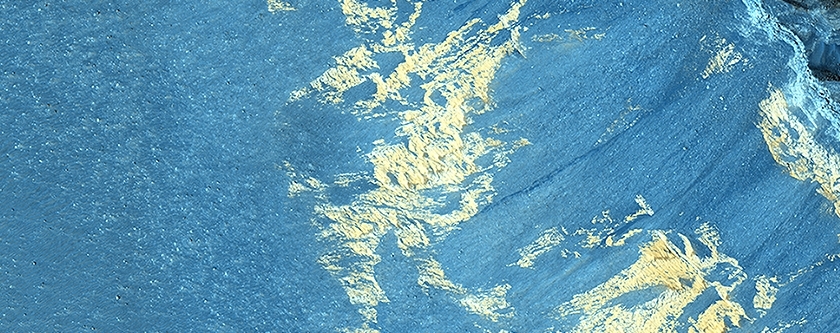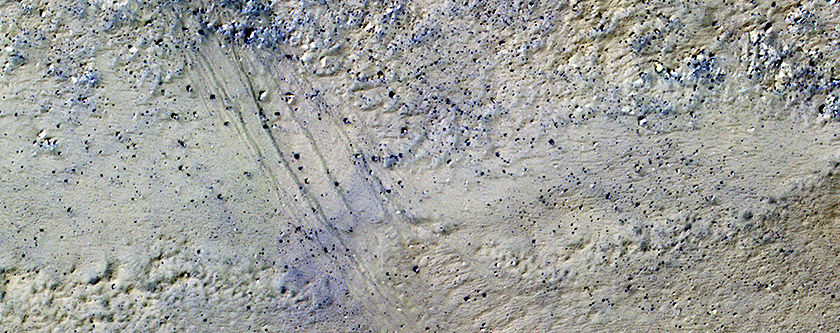The People's Camera
Photographs of the Red Planet taken by the Mars Reconnaissance Orbiter show craters,
mountains and valleys in unprecedented detail, making Mars unavoidably relatable
By Amelia Taylor-Hochberg.
Photographs courtesy of HiRise
Since March 10, 2006, when the Mars Reconnaissance Orbiter spacecraft first “arrived” in the Red Planet’s orbit, it has been dutifully photographing the planet’s surface in unprecedented detail.
Using a camera built for the High Resolution Imaging Science Experiment (poetically known as HiRISE), the orbiter has since visualized 3% of Mars’ surface, imaging objects as small as four feet across, from an orbiting path between 125 to 250 miles away. In October of this year, NASA used HiRISE photographs as evidence for the existence of water on Mars.
Built under the University of Arizona’s Lunar and Planetary Laboratory, HiRISE has the largest reflecting telescope ever used on a deep space mission, and has beamed tens of thousands of images back to Earth. These photos not only visualize the Martian landscape, they also help identify potential landing sites for future missions, and are used (with a spectrometer onboard the craft) to help identify chemical compositions on the planet’s surface.
All the images go up online in the public domain (standard protocol for NASA). Anyone can request a spot to photograph, earning HiRISE the nickname “The People’s Camera”.
The scientific implications for such data-rich photographs are huge. The images also shape humanity’s perception of the Red Planet as a viable second home.
As media attention and public imagination continually speculate about life on Mars, seeing the Martian surface this close up dissolves another layer of disconnection between human life and Mars by making it unavoidably relatable. Here, too, there are craters, mountains and valleys, rock and dust, and water.
Just as “The Blue Marble”— the iconic photo of Earth taken aboard the 1972 Apollo 17 mission, took on the hefty symbology of the environmental movement, HiRISE’s images of Mars are suffused with the hopes (and fears) of what it may mean to humanity in the future.
The orbiter’s mission is ongoing, and the images HiRISE has captured have already trickled down into the collective unconscious – most recently (and perhaps deeply) via Ridley Scott’s [2015 film] The Martian, on which set pieces were designed directly from HiRISE imagery. As cultural artifacts built on these photographs proliferate, we get closer to Mars – even here on Earth.
Note: all photos from HiRise: NASA/JPL/University of Arizona
Amelia Taylor-Hochberg:
Species: Homo sapiens
Habitat: Los Angeles, California
Diet: Omnivorous – Sandwiches, open-faced mostly.
Occupation: Journalist / editor
Contact: longhyphen@gmail.com








